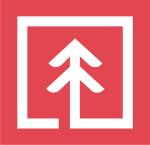What is our primary use case?
My use case for Control-M is that it's a job scheduler for some jobs regarding data warehouse jobs and billing tasks for a telecommunication company, mainly monitoring jobs.
What is most valuable?
The best features of Control-M that I most appreciate are the integration and unification of different systems, such as BMC Remedy, integration with alerting systems, and the unification for the dashboard—something akin to one dashboard to monitor everything, which is very good. It can communicate with different platforms such as cloud, different systems, and OSes. I also appreciate the visualization; when we are designing a tree, a job tree, the option to visualize the dependencies and the mapping is very user-friendly.
Control-M has positively impacted my organization, particularly in the flexibility it offers in scheduling jobs. It has a nice feature called Calendar Integration that integrates with the company calendar to allow for the holidays and special events regarding the organization, not only the public calendar, but specifically for the organization.
What needs improvement?
There are some areas in Control-M that have room for improvement, particularly some constraints regarding the scripts, such as limitations in how they can be executed and integrated; it's not the normal scripting way in some cases. It's not in all cases, but in some cases, there are limitations and constraints in running the scripts.
Additionally, Control-M requires some hardware resources in terms of system requirements; it consumes some hardware resources.
For how long have I used the solution?
I have been using Control-M for about five years or more than five years.
What do I think about the stability of the solution?
The stability of Control-M gets a nine from me; although we faced one issue during this year regarding its stability, nine is good for it.
What do I think about the scalability of the solution?
Scalability for Control-M is good; I would rate it an eight due to the high license cost, but it's scalable.
How are customer service and support?
I would rate the technical support for Control-M a nine.
How would you rate customer service and support?
What was our ROI?
I have seen a return on investment with Control-M; we have the real-time alert feature. Our administrators get alerts for any job failures or emails for any issues, which saves our business. We also have reporting tools embedded in Control-M to generate daily reports and keep historical data. All of this handles our job, mainly the monitoring and automation for the scheduling. That's why we are using it.
What's my experience with pricing, setup cost, and licensing?
My thoughts on the pricing of Control-M are that the cost of the license is very high. You have to implement some cost-saving measures, such as cleaning up jobs that are not required anymore on a monthly basis, in order to control the license, as the license is very costly.
Additionally, there's a dependency on training; on a yearly basis, or whenever there's a new version, we need to schedule training and an official training from an accredited course center or from BMC itself, which is very costly.
Which other solutions did I evaluate?
I haven't dealt with other solutions or vendors on the market, but I can say Control-M is better than good when it comes to automation.
What other advice do I have?
There is a good feature about the drag-and-drop; we can easily create and modify jobs with drag-and-drop in the interface, which makes it easier and user-friendly. BMC is a good strategic partner; they are helping us in mapping out our migration strategy, and we have a team from their side that supports us in our job. They know our case and they are specialized in our system, following up on our system.
I recommend Control-M to other users because it's user-friendly, it has a unified dashboard, and it's easy to schedule and use. However, there are certain limitations, especially for larger organizations, to afford the cost of the license and the cost of training. For a small organization, I wouldn't recommend it, as it would be very costly for them.
I would rate Control-M an eight out of ten, considering I have some concerns about the cost and the training, which is also related to cost.
Which deployment model are you using for this solution?
Hybrid Cloud
Disclosure: PeerSpot contacted the reviewer to collect the review and to validate authenticity. The reviewer was referred by the vendor, but the review is not subject to editing or approval by the vendor.



















